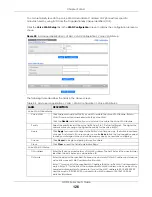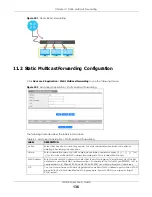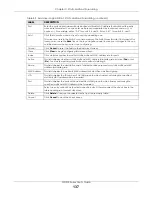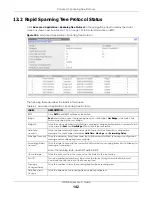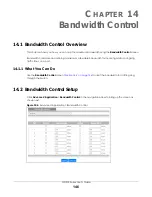
Chapter 11 Static Multicast Forwarding
GS1915 Series User’s Guide
135
C
HAPTER
11
Static Multicast Forwarding
11.1 Static Multicast Forwarding Overview
This chapter discusses how to configure static multicast forwarding rules based on multicast MAC
addresses or multicast IPv4 addresses.
11.1.1 What You Can Do
Use the
Static Multicast Forwarding
) to configure rules to forward
specific multicast frames, such as streaming or control frames, to specific ports.
11.1.2 What You Need To Know
A multicast MAC address or multicast IP address is the MAC address or IP address of a multicast group.
A static multicast address is a multicast MAC address or multicast IPv4 address that has been manually
entered in the multicast table. This identifies the destination of the multicast content. Multicast IPv4
addresses uses the Class D IP addresses range 224.0.0.0 to 239.255.255.255. Multicast MAC addresses
have a “1” as the last binary bit of the first octet pair (for example, 01:00:5e:00:00:0A). Static multicast
addresses do not age out. See
IP Multicast Addresses on page 167
for more information on IP multicast
addresses.
Note: Static (manual) multicast forwarding allows you (the administrator) to forward multicast
frames to a member without the member having to join the group first.
If a multicast group has no members, then the Switch cannot forward to specific ports unless you
configure static (manual) multicast entries. The Switch will either flood the multicast frames to all ports
(default) or drop them.
shows such unknown multicast frames flooded to all
ports. With static multicast forwarding, you can forward these multicasts to ports within a VLAN group.






